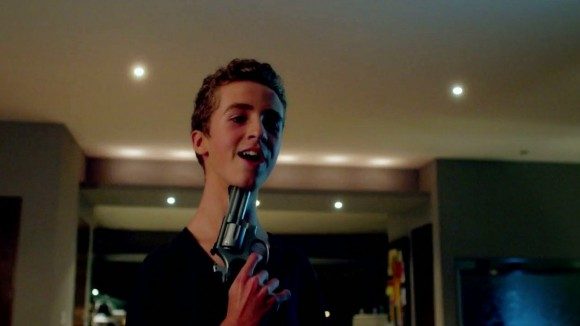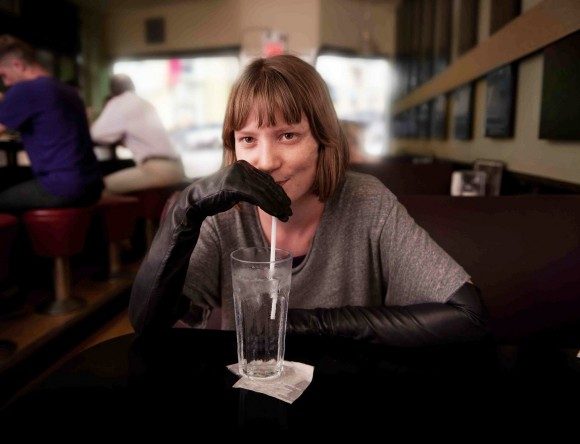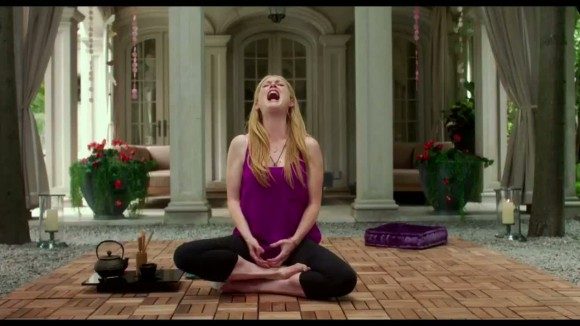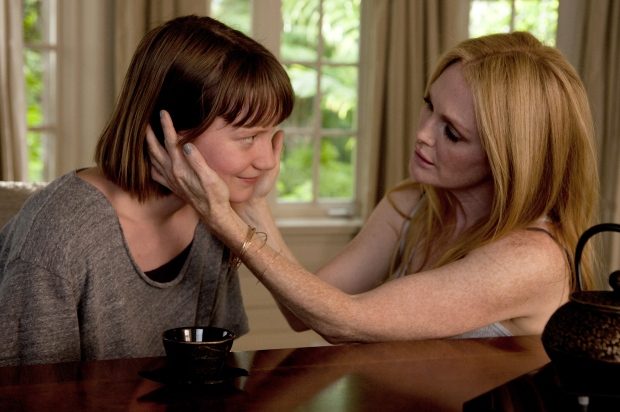

Films have been plumbing the murky depths of Hollywood since the early days of Tinsel Town. Los Angeles subterfuge is essentially it’s own genre now. However, director David Cronenberg is not one coast through well-worn territory, and his latest manages to carve out its own niche of dark wilderness. Yes, in many ways Maps to the Stars is a Hollywood send up, but it never settles into that rut, instead skirting wildly, albeit inconsistently, around it.
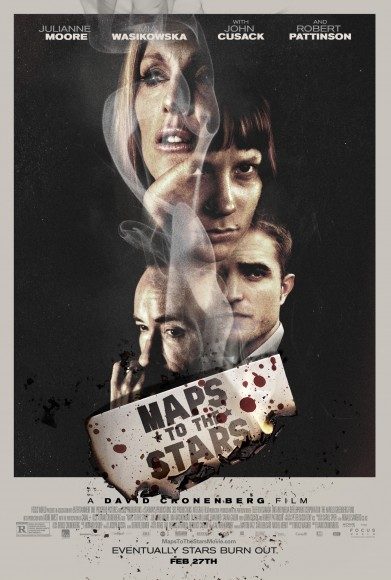

While the narrative of Maps to the Stars may seem unwieldy, it doesn’t take long to see how the pieces of this Hollywood jigsaw fit together, leaving the film careening towards its conclusion with a sense of fatalism that I’m sure is the point. Cronenberg’s film is an icy one. It’s a cold look at Hollywood’s incestuous upper-class and the paralyzing fear of death in a town that’s obsessed with immortality. Nowhere is this more evident than in Moore’s Havana, who spends most of the film attempting to secure a role remaking a part her mother starred in shortly before dying in a fire. Havana sees the role as her attempt both to hold onto the youth that has already passed her by and to excise the metaphoric and literal ghost of her mother, who shows up to torment her from time to time.
The film is more of a ghost story than a satire. Havana is haunted by her mother, and Benjie sees visions of a girl who he visited in one of the most uncomfortable Make-A-Wish Foundation visits ever. The movies are a business centered around creating images that never age, making its stars the perfect candidates for hauntings. Whether or not the ghosts are real is irrelevant, and while the film does provide vague explanations in the form of diagnosed psychoses, that’s really not the point. Cronenberg is far more interested in the psychology of a society driven to create ghosts than he is in explaining how they appear. In a world where anyone above the age of 21 is viewed as menopausal, as one young starlet croons, the dead truly are walking among the living.
The script for Map to the Stars, by Bruce Wagner, was originally written more than 20 years ago. The film occasionally shows its age, particularly in the scenes that glimpse behind the Hollywood curtain. Moments that might have felt biting ten years ago now feel almost passé. Cronenberg combats this sense of entropy with his own brand of controlled ferocity. This is not a simple Hollywood lampooning; and the LA satire never exists for its own sake. The film is using its back lot setting as a forum to talk about something larger. The scenes about the business of making films are among the most sterile. Benjie’s meeting with studio executives to discuss his sobriety is particularly unnerving. The shots are fixed and clinical and the lenses used are short enough to make the images ride the line between hyper-realism and the surreal. This is Cronenberg’s first film shot in the United States and yet it feels very removed from reality, something constructed on a Toronto soundstage.
The performances are, on the whole, excellent. Julianne Moore is the obvious standout, taking her bleached blonde performance to hallucinatory heights that almost belong in a different film. It’s an uncomfortable performance, and one that Moore throws everything into; her best scene takes place on a toilet. Mia Wasikowska channels the same steely energy that made her a stand out in Stoker, although she really should stop getting cast as an 18-year-old. Cusack and Pattinson are both fantastic in their respective roles, although each feels shortchanged for screen time. On the other hand, Evan Bird suffers from an overabundance of it. He certainly has fun playing what might be the most vitriolic and nauseating child star in history, but one can’t help but feel the part might have had more punch had it been pulled back a bit.
Map to the Stars suffers from some serious tonal issues that occasionally threaten to break the film’s narrative spine. The film takes itself to seriously to really be a comedy, but the world it paints is far too gothic and grotesque to ever really be seen as a straightforward drama. The film exists in a fragile melodramatic twilight, and not one that’s easy to buy into. The fact that it’s able to come together at all is a testament to the strength of the talent involved.
The Verdict: 3 out of 5
It’s never a good idea to judge a film based on what it attempts to be. In doing so, you can completely miss aspects that make it transcend its original aims. It’s difficult to say what the original aim of Maps to the Stars is, but it ultimately doesn’t matter. If you’re looking for Hollywood subterfuge, this isn’t it. It’s difficult to satirize a reality that you’re completely divorced from. Cronenberg’s film plays out more like a dark, polemic reflection of what we already expect Hollywood to be. The film experiments with some big ideas and lands some heavy hitting punches. It also makes its share of missteps. Still, the film’s furious pacing and suitably acidic direction make it worth considering. Cronenberg’s films are all about human fragility, and Maps to the Stars proves a fertile ground for him to sow his poison.

